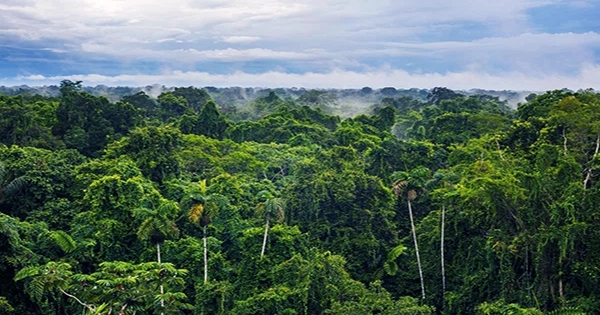A new and data-driven approach to an important question: how many tree species are there on Earth? According to the worldwide association, 64,100 tree species are known, but statistically, there should be many more. Researchers report in Proceedings of the National Academy of Sciences that they believe there are another 9,200 species to discover, bringing the total number of species to 73,300. It was not easy to come up with this figure. To build this extensive database, the 150 scientists had to identify about 40 million trees.
In a statement, main author Professor Roberto Cazzolla Gatti of the University of Bologna said, “Extensive knowledge of tree richness and diversity is crucial to protecting the stability and functionality of ecosystems.” “Until now, our knowledge of vast swaths of the earth was restricted, and it was based on field observations and lists of species from various regions. These restrictions made it difficult to take a global view of the problem.” Limited funding for such a global census, logistical challenges, fieldwork difficulties, and even taxonomic issues such as determining whether identical organisms belong to distinct species or not meant that this project was not for the faint of heart.
Following the mapping of known species, statistical analysis was carried out on the supercomputer at Purdue University’s Forest Advanced Computing and Artificial Intelligence (FACAI) Laboratory in Indiana (USA). That’s how the overall number of trees was calculated, as well as the conclusion that roughly 14% of all tree species had yet to be discovered. “We integrated separate datasets from someone walking out to a forest stand and measuring every single tree into one enormous global collection of tree-level data,” says the researcher. “Counting the number of tree species around the world is like putting together a puzzle with pieces all over the place,” said Professor Jingjing Liang, the GFBI Purdue-Hub coordinator.
“We, the Global Forest Biodiversity Initiative (GFBI), worked as a team to solve it, each contributing a piece.” The research predicts that 40 percent of the unknown species will be found in South America, specifically in two environments: “tropical and subtropical forests” and “grasslands, savannas, and shrublands” of the Amazon and Andes. More specifically, 3,000 species will be uncommon and inhabit these threatened tropical and subtropical ecosystems.
The findings illustrate the global diversity of trees on a continental and regional scale, as well as the impact of humanity on them. “These findings underscore the susceptibility of global forest biodiversity to anthropogenic changes, particularly land use and climate, because uncommon taxa are disproportionately threatened by these pressures,” stated University of Minnesota co-author Professor Peter B. Reich. We may lose some of these species before we discover them, due to the changes humans are contributing to the global climate.
















